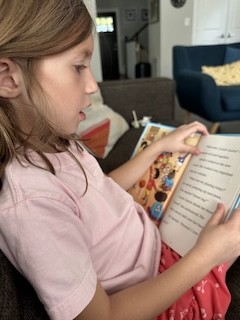Blast from the Past: This entry posted July 13, 2019 and re-posted on September 23, 2023. These days there is so much arguing about whether to teach comprehension strategies or not, that how to teach them seems to be getting lost. Indeed, there is a lot of research saying that teaching strategies is valuable, and that having students summarize what they read has a big payoff. This kind of strategy gives students something to do with their minds -- it gets them to pay attention to the content of the text, rather than just reading it. This blog seems to provide a worthwhile reminder to teachers of how to teach kids to think about text in ways that will help them to slow down, think about what the text says, and remember the information.
Teacher question:
What is the most effective way to teach summarizing to our most struggling readers? How can we teach them how to summarize both literary and informational texts?
Shanahan response:
Good choice. Of all of the literacy activities that you could have focused on, summarizing is the most powerful for elementary students.
The National Reading Panel (NICHD, 2000) reviewed more than 200 studies on comprehension strategies and that analysis attributed the largest learning effects to summarizing. More recent reviews focused on kids with learning disabilities (Kim, Lina-Thompson, & Misquitta, 2012; Solis, Ciullo, Vaughn, Pyle, Hassaram, & Leroux, 2012) have been similarly positive, and studies of the payoffs from writing about text have, too (Graham & Hebert, 2010). Summarization instruction is beneficial to a wide range of younger readers.
Not surprising, studies consistently show that retelling performance correlates with the results of standardized reading comprehension tests (Reed & Vaughn, 2010), and all states require, in their educational standards, that kids learn to summarize what they read. For example, the Common Core State Standards require that first-graders learn to “Retell stories, including key details, and demonstrate understanding of their central message or lesson” (literary text) and for third-graders, “Determine the main idea of a text; recount the key details and explain how they support the main idea” (informational text). There are similar summarizing requirements at other grade levels, and in other states.
Summarizing is likely so powerful because it requires readers to consider each of the authors’ propositions and to evaluate what they contribute to the overall meaning of a text. Readers have to weigh each thought and determine how important it is—including attending to how the information is organized. Summarizing captures both language skills and content knowledge (Galloway & Uccelli, 2019), a powerful combination.
Various schemes for dealing with summarization have been proposed and they all improve reading comprehension, according to the research. Probably the most comprehensive of these and the most studied is the plan put forth by the late Ann Brown, and her colleagues (Brown & Day, 1983).
Brown and company reasoned that summarization required six basic steps:
1. Delete trivial information
2. Delete redundant information
3. Substitute superordinate terms for lists
4. Substitute superordinate terms for series of events
5. Select a topic sentence
6. Invent a topic sentence (if the text doesn’t include one)
In other words, delete what isn’t necessary, collect into groups ideas that fit together, and then find or compose a sentence that describes the important ideas that are left.
Most authorities recommend starting with paragraphs or other short informational texts and then increasing the length and complexity of the texts to be summarized as students develop facility.
Deleting tends to be easier than identifying or writing topic sentences or main ideas (Winograd, 1984). Identifying unimportant information, examples, and repetitions will require some practice, but not as much as those more demanding tasks usually do.
Based on what has worked in the studies, I would suggest a “gradual release of responsibility” approach to teaching summarization (Gajria & Salvia, 1992). That means the teacher starts out with a demonstration (or several demonstrations) of how and why to summarize.
The teacher might say something to the students such as:
“Boys and girls, it is valuable to be able to summarize the information that you read about. If you can summarize a text accurately, you’ll be more likely to remember the information and summarizing is an important building block in some school tasks that you’ll learn when you get older—like how to write a term paper. Over the next several weeks, I’ll be teaching you how to summarize and you’ll be practicing this ability every day with various texts. Summarizing is the ability to retell the most important information from a text in a shorter form and in your own words.
“For instance, take this paragraph:
‘You can see some small things with your eyes. With a microscope, however, you can see much smaller details. Think of a butterfly’s wing. You can see it with your eyes. But a microscope can show you small parts of the wing called scales.’
“Let me show you how I would summarize this. First, I’d try to identify the big idea that all the sentences are about. I think the first two sentences capture that big idea because all the sentences are about what you can see with your eyes and what you can see with a microscope.”
I’d then underline those sentences, but I’d have the kids check my claim… reading each sentence to see if it is about that big idea.
You can see some small things with your eyes. With a microscope, however, you can see much smaller details.
“Think of a butterfly’s wing. You can see it with your eyes. But a microscope can show you small parts of the wing called scales.”
Then: “It also helps if we can get rid of the information that is not very important to remember. In this paragraph, these sentences about a butterfly’s wing don’t seem very important. They are just examples of what the microscope allows us to see. Do you think a microscope could let us see other small things, not just butterfly wings? So that is just an example to help me understand what microscopes will allow us to do but isn’t really the point. Let’s cross out that unimportant example.:
You can see some small things with your eyes. With a microscope, however, you can see much smaller details.
Think of a butterfly’s wing. You can see it with your eyes. But a microscope can show you small parts of the wing called scales.
Finally: “A good summary of a paragraph should be no more than one sentence long, and it should be in the reader’s own words. Now I must turn these sentences into a single sentence of my own.”
At this point the teacher rereads those two sentences and then removes them from sight. Kids have been found to have trouble translating text into their own words if they can still see the author's (Stein & Kirby, 1992), so it is a good idea to cover it or remove it during writing. Now the teacher writes:
“Microscopes let you see things so small that you can’t see them with just your eyes.”
At this stage the teacher can compare the original text with the summary, evaluating the effort. This is a good summary because it focuses only on the big idea in the text, it omits the trivial example that was used to illustrate this big idea, it is markedly shorter than the original, and it is in the reader’s own words. Yep, a winner.
Once kids have the idea, the teacher can guide the students’ efforts. I would initially do this in a whole class setting, saving small group work for later. Again, the teacher would provide an explanation of the purpose of the overall process and of each of the steps. The teacher will guide kids to try to identify the main idea, to summarize lists and sequences, and to delete the trivia, always ending up with a single sentence summary of the paragraph.
As the students make progress the teacher does less and less. Thus, instead of saying, “the next thing that we do is cross out the unimportant information,” the teacher may say, “what do we do next?”
When kids get the hang of this, then have them try the same thing in pairs, with you circulating among the partners to ensure success; and to identify who is ready to fly on their own wings. As students learn to summarize paragraphs successfully, you can raise the stakes and teach them how to apply this skill to more extensive texts.
Some studies suggest teaching kids to ask themselves questions to guide themselves through this process (Malone & Mastropieri, 1992). Thus kids, learn to ask themselves, “What’s the main idea here? What is unimportant and can be deleted? How would I restate the main idea in my own words?” Not a bad idea.
A final thought: I’d suggest using your current science and social studies texts, Weekly Readers, and the informational texts from your core reading program as a source of the paragraphs that you use for these exercises. In other words, use real paragraphs that students have already read or will soon read in your program. That will both show them the value of this ability and will allow them previews/reviews of the content that you are trying to teach.
Of course, summarizing paragraphs from informational texts is only one part of what you asked about. Next week, I’ll describe what research has to say about making that transition to summarizing longer informational texts successfully, as well as how to teach summarization of literary texts.
References
Brown, A. L., & Day, J. D. (1983). Macrorules for summarizing texts: The development of expertise. Journal of Verbal Learning & Verbal Behavior, 22(1), 1–14. doi.org/10.1016/S0022-5371(83)80002-4
Gajria, M., & Salvia, J. (1992). The effects of summarization instruction on text comprehension of students with learning disabilities. Exceptional Children, 58(6), 508–516.
https://doi.org/10.1177/001440299205800605
Galloway, E. P., & Uccelli, P. (2019). Examining developmental relations between core academic language skills and reading comprehension for English learners and their peers. Journal of Educational Psychology, 111(1), 15–31. doi.org/10.1037/edu0000276
Graham, S., & Hebert, M. (201). Writing to read: Evidence for how writing can improve reading. New York: Carnegie Corporation.
Kim, W., Linan-Thompson, S., & Misquitta, R. (2012). Critical factors in reading comprehension instruction for students with learning disabilities: A research synthesis. Learning Disabilities Research & Practice, 27, 66-78. doi.org/10.1111/j.1540-5826.2012.00352.x
Malone, L. D., & Mastropieri, M. A. (1992). Reading comprehension instruction: Summarization and self-monitoring training for students with learning disabilities. Exceptional Children, 58(3), 270–279.
National Institute of Child Health and Human Development. (2000). Report of the National Reading Panel: Teaching children to read: An evidence-based assessment of the scientific research literature on reading and its implications for reading instruction. Washington DC: U.S. Department of Health and Human Services, Public Health Service, National Institutes of Health, National Institute of Child Health and Human Development.
Reed D., & Vaughn S. (2010). Reading interventions for older students. In T. A. Glover, & S. Vaughn (Eds.), The promise of response to intervention: Evaluating current science and practice (pp. 143–186). New York, NY: Guilford.
Solis, M., Ciullo, S., Vaughn, S., Pyle, N., Hassaram, B., & Leroux, A. (2012). Reading comprehension interventions for middle school students with learning disabilities: A synthesis of 30 years of research. Journal of Learning Disabilities, 45(4), 327–340. doi.org/10.1177/0022219411402691
Stein, B. L., & Kirby, J. R. (1992). The effects of text absent and text present conditions on summarization. Journal of Literacy Research, 24, 217-232.
Winograd, P. N. (1984). Strategic difficulties in summarizing texts. Reading Research Quarterly, 19(4), 404–425. doi.org/10.2307/747913
If you would like to listen to Tim Shanahan's podcast on this topic, click this link.







Comments
See what others have to say about this topic.